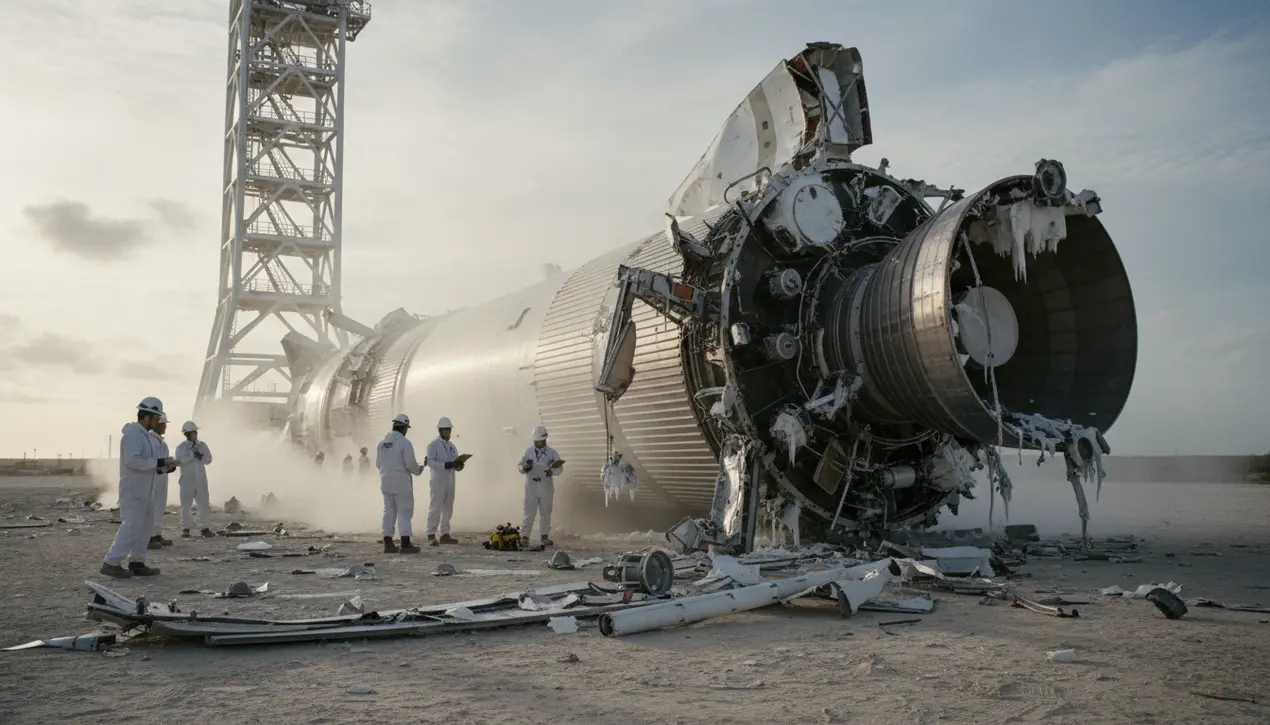
Sciencespace & astronomySpaceX and Private Space
Newest Starship booster significantly damaged during testing.
TH
Thomas Green
1 day ago7 min read5 comments
SpaceX's ambitious timeline for its Starship program encountered a significant, though not entirely unexpected, setback Friday morning when the latest prototype of its Super Heavy booster, a colossal rocket core designated for future missions, sustained substantial damage during a critical ground test at its Starbase facility in Boca Chica, Texas. While the company has remained characteristically tight-lipped on the specific technical details, initial reports and visual analysis from dedicated spaceflight observers suggest the incident occurred during a routine spin prime test—a procedure meant to flow liquid oxygen through the booster’s complex plumbing system—which somehow escalated, resulting in a violent rupture near the engine section and a dramatic, uncontrolled release of propellant.This event is a stark reminder of the brutal, high-stakes engineering challenges inherent in developing a fully reusable, super-heavy-lift launch system, a venture that Elon Musk himself has often compared to ‘capturing lightning in a bottle. ’ The damaged booster, known as Booster 12, was a key component in the planned next integrated flight test of the complete Starship stack, a vehicle that stands as the tallest and most powerful rocket ever built, dwarfing even the legendary Saturn V that took astronauts to the Moon.This incident inevitably pushes that timeline back, forcing teams of engineers to conduct a thorough forensic investigation into the failure mode, a process that will involve sifting through terabytes of sensor data and scrutinizing every component of the affected section. The philosophy at SpaceX, however, has always been one of rapid iteration and testing to destruction; they build prototypes not as pristine museum pieces but as hardware meant to be pushed to its absolute limits to uncover weaknesses.From this perspective, a ground test failure, while costly and delaying, is a far preferable outcome to a catastrophic in-flight anomaly, providing invaluable, if harsh, data that will be directly fed into the design and manufacturing of Booster 13 and beyond. The broader context here is the intense global race to establish a permanent human presence on the Moon and, ultimately, Mars, with NASA’s Artemis program relying heavily on a modified version of Starship to serve as the human landing system.Every delay in Starship’s development sends ripples through these multi-billion-dollar, geopolitically charged timelines, potentially ceding strategic advantage to international competitors like China, which is pursuing its own lunar ambitions. Yet, for those who follow the cosmic drama of space exploration, this is a familiar narrative—the path to the stars has always been littered with bolts, shrapnel, and the ghosts of rockets that came before. The fiery trial in Texas is not an end but a brutal, necessary chapter in the story, a testament to the fact that reaching for the next frontier requires first learning how to survive the explosive lessons taught just above the ground.
#SpaceX
#Starship
#booster
#testing failure
#rocket
#space exploration
#featured
Stay Informed. Act Smarter.
Get weekly highlights, major headlines, and expert insights — then put your knowledge to work in our live prediction markets.
Related News
Comments
Loading comments...
© 2025 Outpoll Service LTD. All rights reserved.